With war looming with Germany during the late 1930s, Britain needed a small arm for their infantrymen that would fill the gap between an SMLE Enfield rifle and the Bren light machine gun. With Britain's own industrial industry being pushed to its limit, Britain required a foreign firearms manufacturer to develop and produce this new rifle. Smith & Wesson accepted the contract and assigned their Chief Engineer Edward S. Pomeroy to fabricate the design, and in 1940 the first prototypes for Smith & Wesson's Model 1940 Light Rifle reached England for trials testing. The rifle was not well received, owing to its overall weight and its poor durability, with some examples developing stress cracks on their receivers after firing around 1,000 rounds. Smith & Wesson quickly remedied this by adding a sleeve that strengthened the receiver and shipping these new Mark II rifles for further testing, but the project was ultimately canceled. After the war, the British destroyed the Model 1940 Light rifles they had remaining in stock and threw them into the English Channel, largely facilitating the rifle's scarcity amongst collectors today. This example is stamped "SMITH & WESSON/ SPRINGFIELD, MASS.U.S.A." followed by the S&W logo on the left side of the receiver, with the right side bearing stampings stipulating the patent information. Bottom of receiver bears the serial number "1528" followed by MK2". The left side of the buttstock features a metal plate that reads "EXTREMELY / HAZARDOUS / DO NOT / LOAD OR FIRE". Features include a blued finish, fluted barrel, blade front sight, adjustable square notch rear sight, a distinct magazine well / ejection port, as well as a smooth tenite buttstock fitted with a serrated metal buttplate. Matching numbers are present on the lower receiver assembly, upper receiver assembly, as well as on the buttplate. Accompanying this example is a letter from Smith & Wesson stating that this is a collectors item and should not be loaded and fired, a copy of the BATF's Curio & Relics Exemption List listing the Model 40 Light Rifles as exempt, 2 spare springs, as well as a brown leather sling. CONDITION: Metal components retain the vast majority of their original factory-applied blue finish, exhibiting some areas of light wear from operation of the action, as well as some scattered superficial marks from handling and storage that show through to silvering. Very bright bore, exhibiting what appears to be some old firing residue in the lands and retaining well-defined rifling throughout. Tenite buttstock is very good, exhibiting some scattered minor handling marks, but is otherwise fine. A very nice and attractive example of a scarce Smith & Wesson Model 1940 Mark II Light Rifle. MLW Name Value Accessories Sling, Spare springs (with paperwork) Barrel Length 9 - 3/4" Caliber/Bore 9mm Para Drop at Comb Drop at Heel FFL Status Curio & Relic Length of Pull Manufacturer S&W Model 40 Paperwork Factory Warning Letter, BATF Curio & Relics Exemption Listing Serial Number 1528
With war looming with Germany during the late 1930s, Britain needed a small arm for their infantrymen that would fill the gap between an SMLE Enfield rifle and the Bren light machine gun. With Britain's own industrial industry being pushed to its limit, Britain required a foreign firearms manufacturer to develop and produce this new rifle. Smith & Wesson accepted the contract and assigned their Chief Engineer Edward S. Pomeroy to fabricate the design, and in 1940 the first prototypes for Smith & Wesson's Model 1940 Light Rifle reached England for trials testing. The rifle was not well received, owing to its overall weight and its poor durability, with some examples developing stress cracks on their receivers after firing around 1,000 rounds. Smith & Wesson quickly remedied this by adding a sleeve that strengthened the receiver and shipping these new Mark II rifles for further testing, but the project was ultimately canceled. After the war, the British destroyed the Model 1940 Light rifles they had remaining in stock and threw them into the English Channel, largely facilitating the rifle's scarcity amongst collectors today. This example is stamped "SMITH & WESSON/ SPRINGFIELD, MASS.U.S.A." followed by the S&W logo on the left side of the receiver, with the right side bearing stampings stipulating the patent information. Bottom of receiver bears the serial number "1528" followed by MK2". The left side of the buttstock features a metal plate that reads "EXTREMELY / HAZARDOUS / DO NOT / LOAD OR FIRE". Features include a blued finish, fluted barrel, blade front sight, adjustable square notch rear sight, a distinct magazine well / ejection port, as well as a smooth tenite buttstock fitted with a serrated metal buttplate. Matching numbers are present on the lower receiver assembly, upper receiver assembly, as well as on the buttplate. Accompanying this example is a letter from Smith & Wesson stating that this is a collectors item and should not be loaded and fired, a copy of the BATF's Curio & Relics Exemption List listing the Model 40 Light Rifles as exempt, 2 spare springs, as well as a brown leather sling. CONDITION: Metal components retain the vast majority of their original factory-applied blue finish, exhibiting some areas of light wear from operation of the action, as well as some scattered superficial marks from handling and storage that show through to silvering. Very bright bore, exhibiting what appears to be some old firing residue in the lands and retaining well-defined rifling throughout. Tenite buttstock is very good, exhibiting some scattered minor handling marks, but is otherwise fine. A very nice and attractive example of a scarce Smith & Wesson Model 1940 Mark II Light Rifle. MLW Name Value Accessories Sling, Spare springs (with paperwork) Barrel Length 9 - 3/4" Caliber/Bore 9mm Para Drop at Comb Drop at Heel FFL Status Curio & Relic Length of Pull Manufacturer S&W Model 40 Paperwork Factory Warning Letter, BATF Curio & Relics Exemption Listing Serial Number 1528

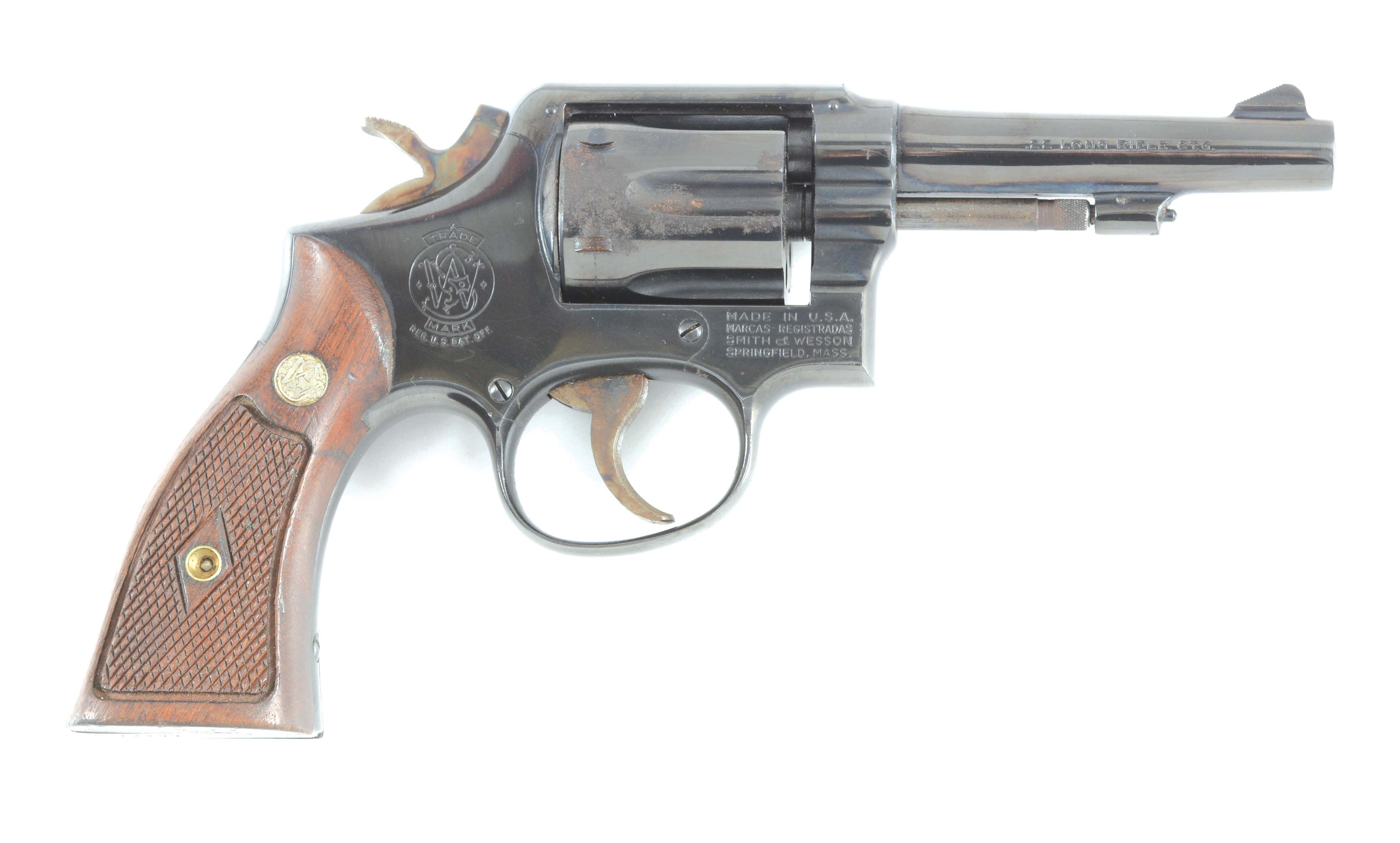

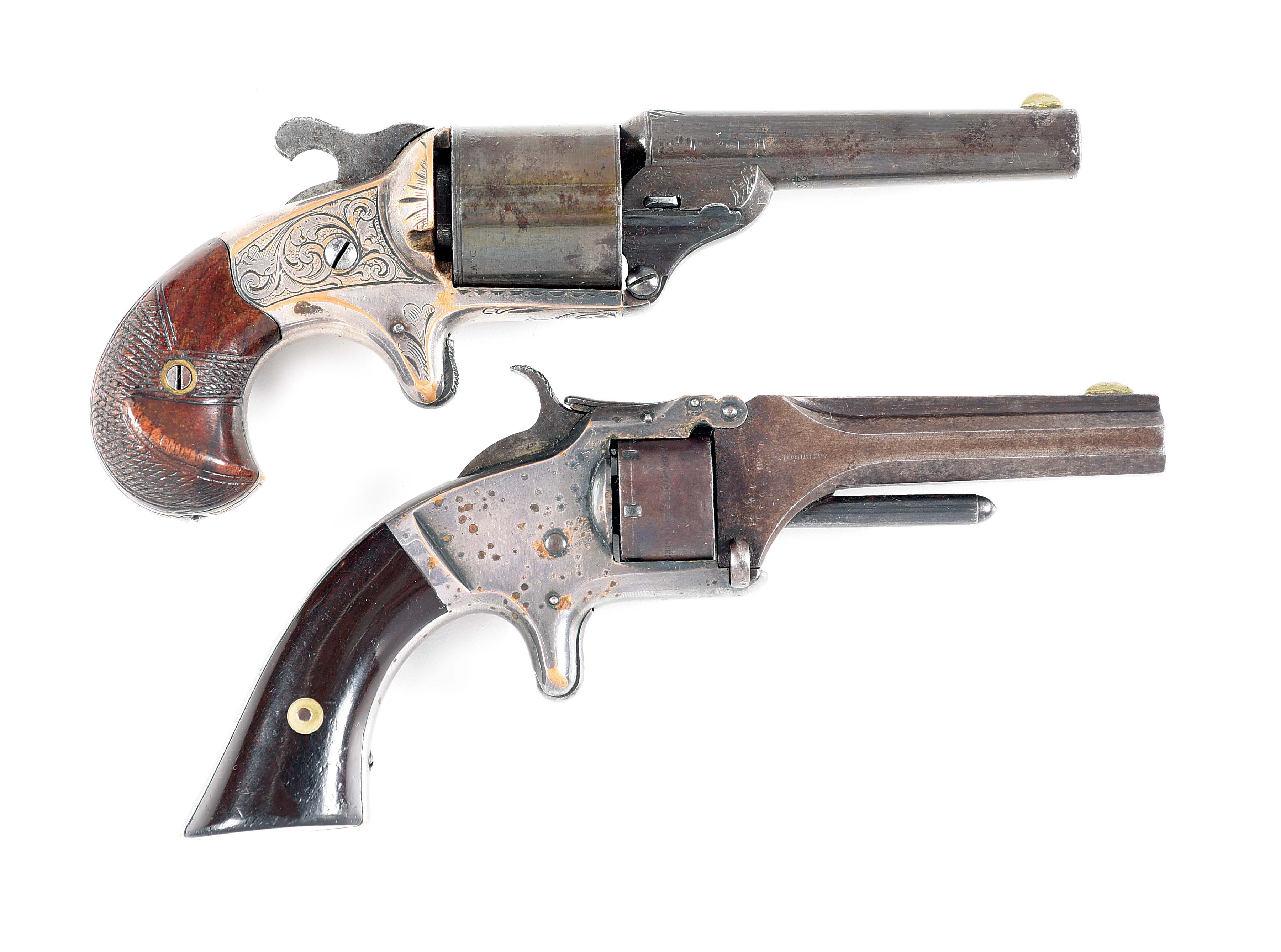


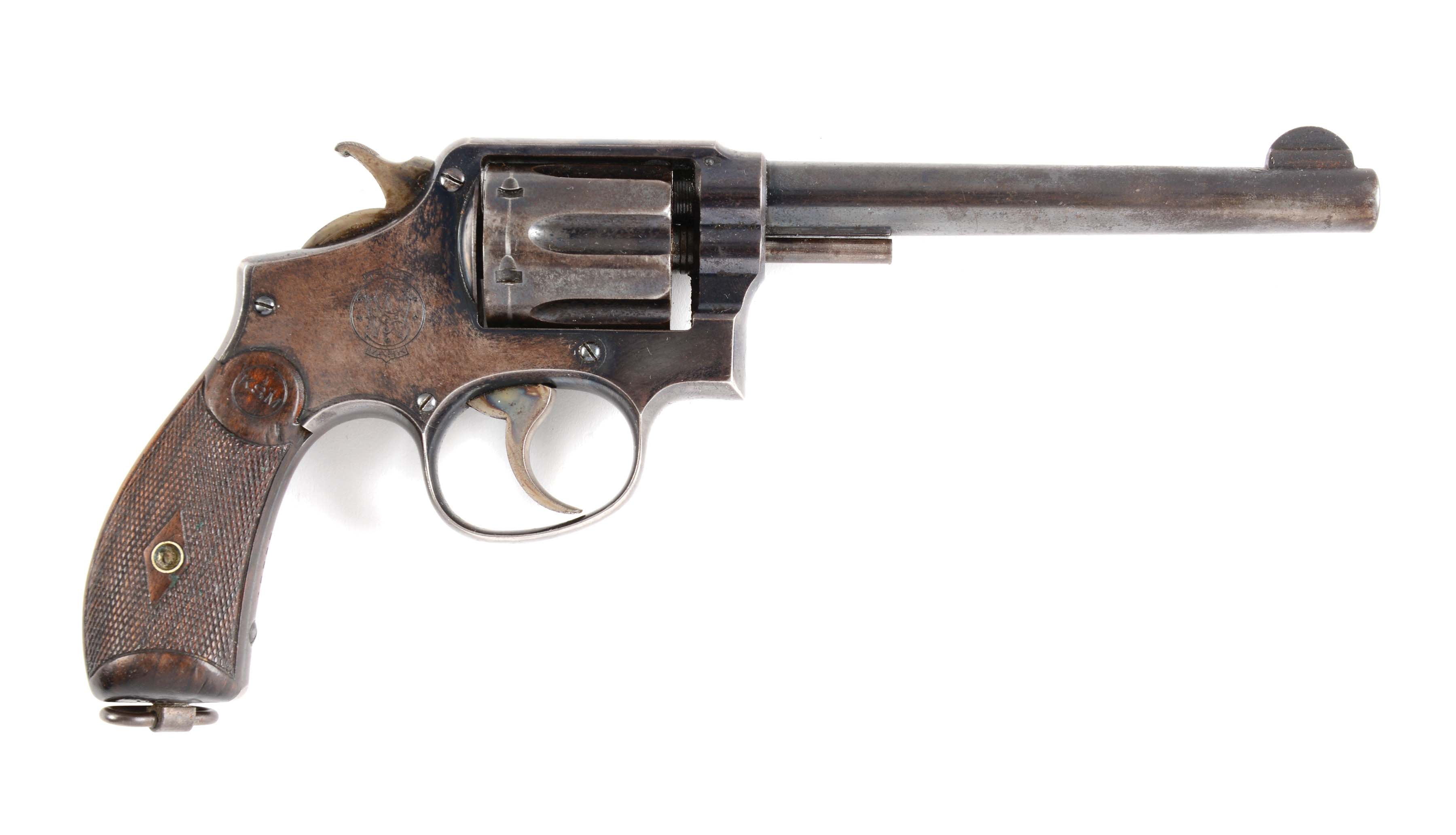
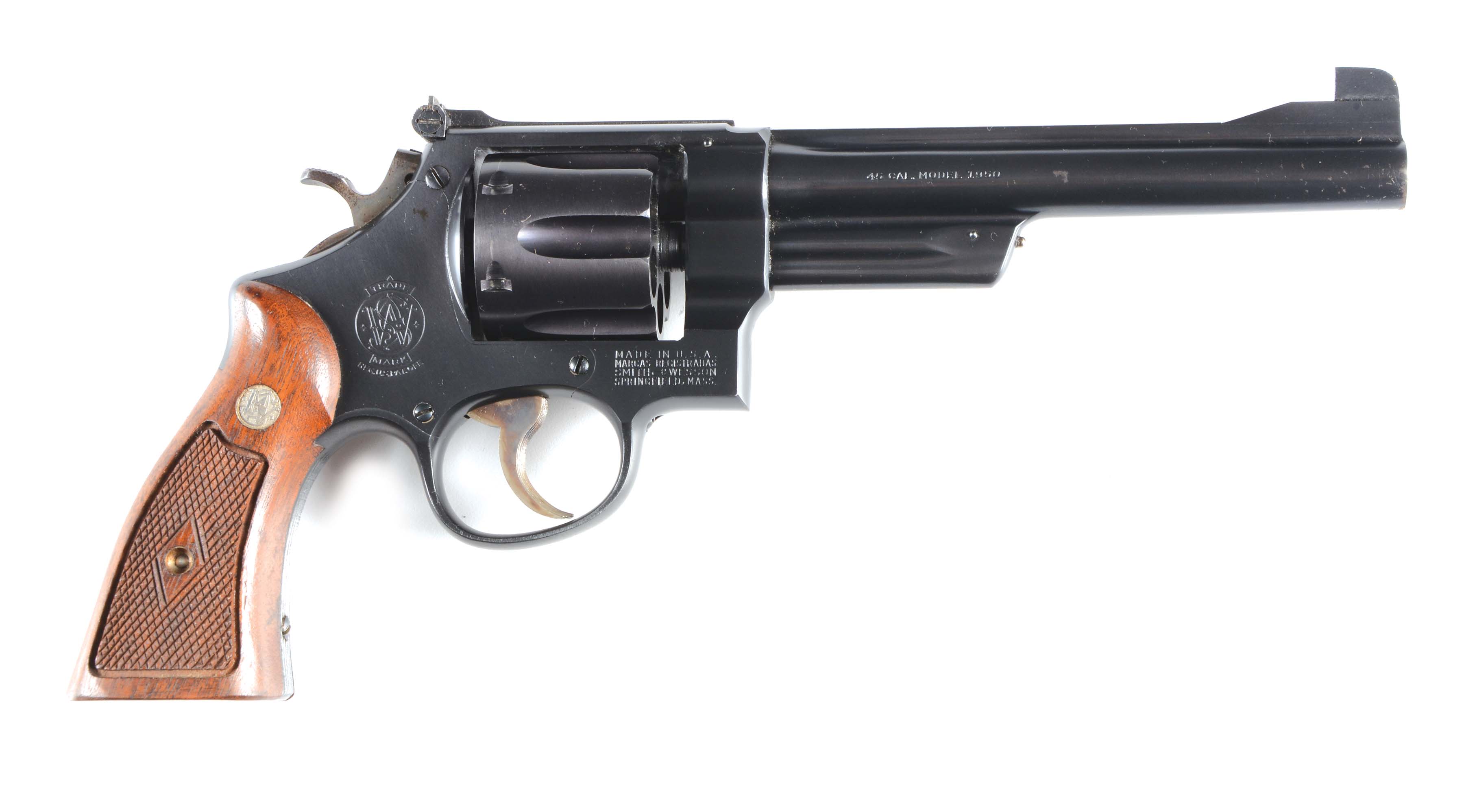
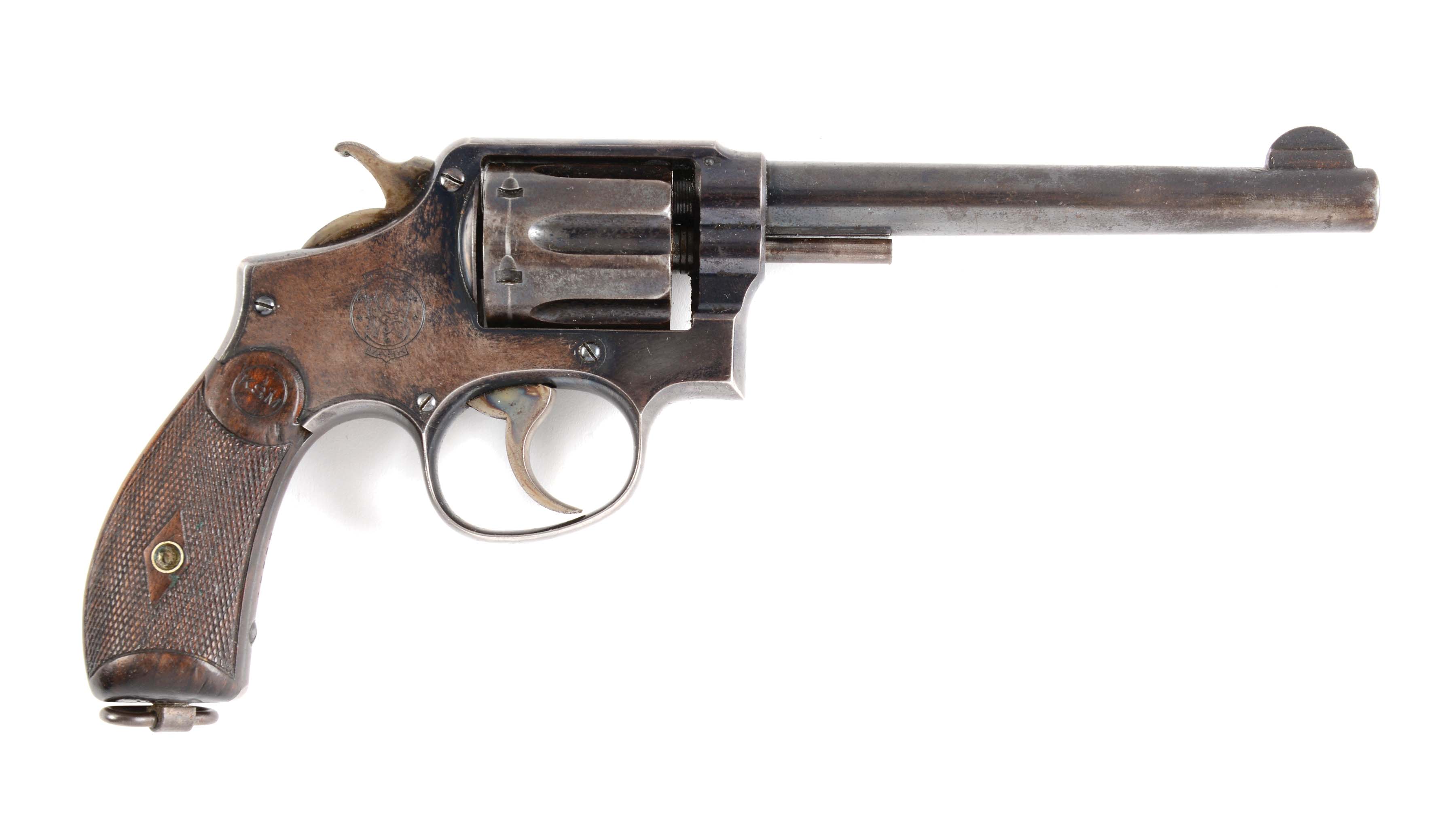

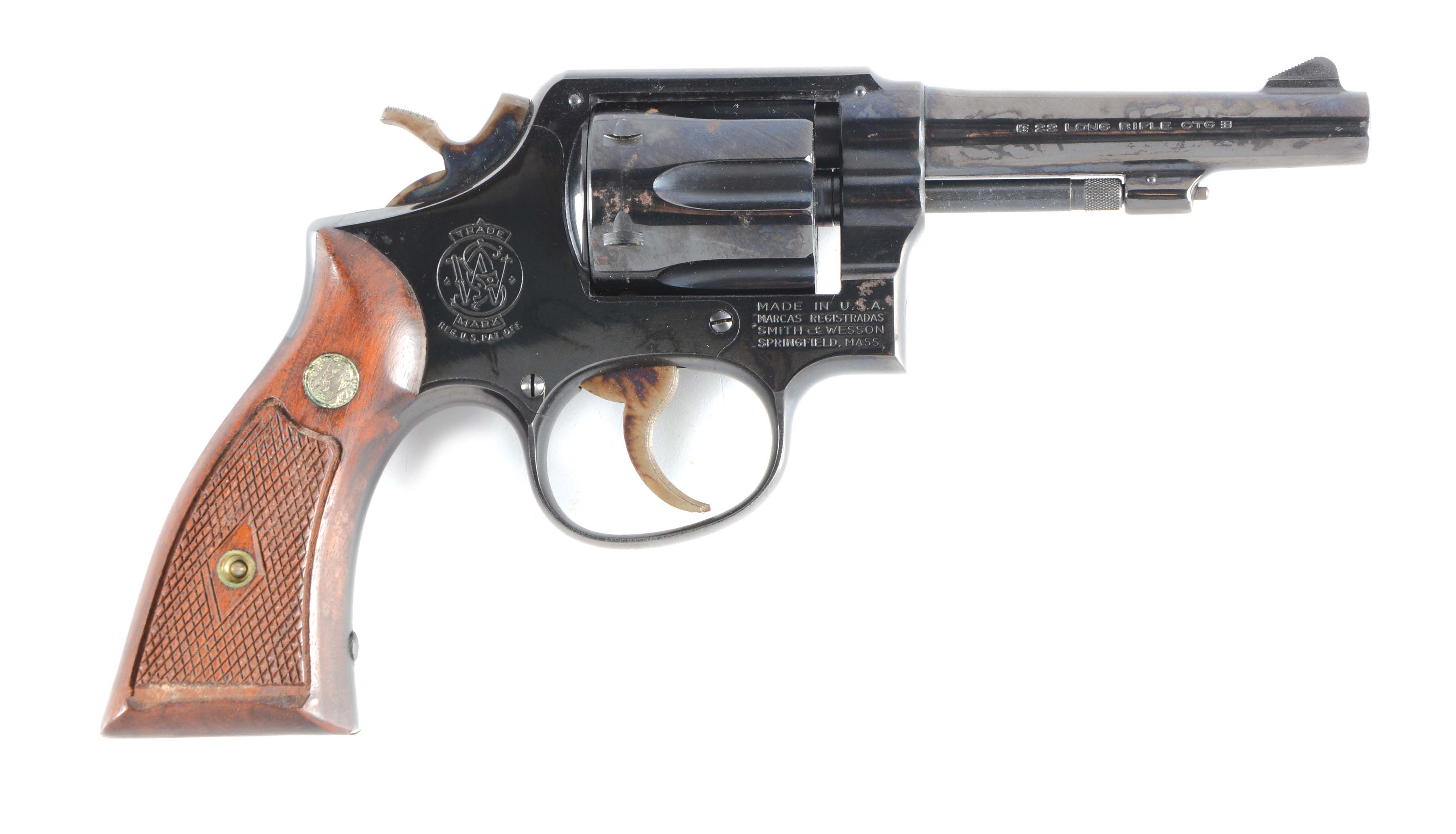


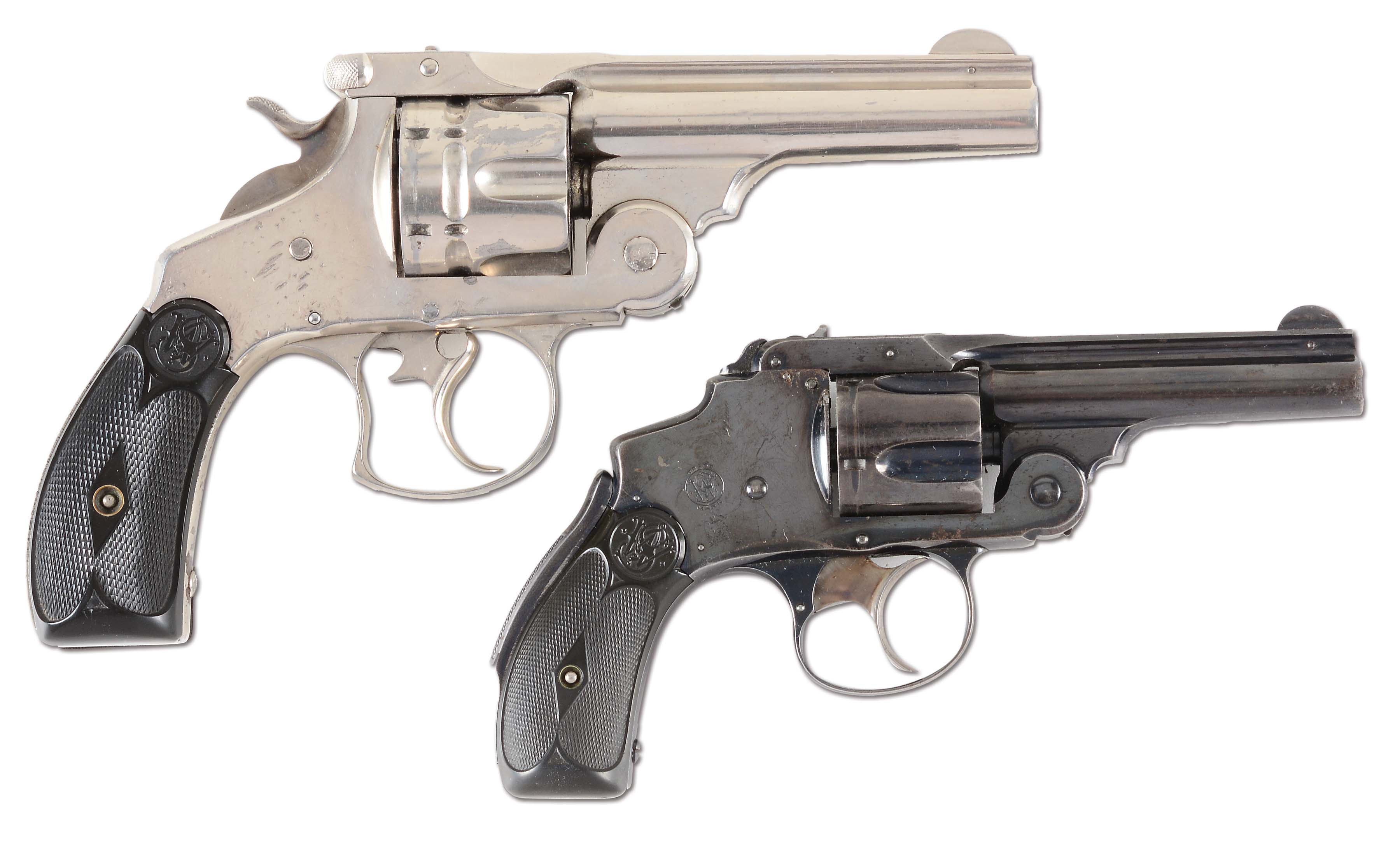
Testen Sie LotSearch und seine Premium-Features 7 Tage - ohne Kosten!
Lassen Sie sich automatisch über neue Objekte in kommenden Auktionen benachrichtigen.
Suchauftrag anlegen